
A handout on artist residency programs resources.
- Subject:
- Arts and Humanities
- Visual Arts
- Material Type:
- Reference
- Provider:
- CUNY Academic Works
- Provider Set:
- City College
- Author:
- Albee, Becca
- Date Added:
- 01/01/2018

A handout on artist residency programs resources.
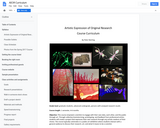
Grade level: graduate students, advanced undergrads, persons with analyzed research results
Course length: 1 semester, 4-6 months
Objective: This course empowers scientists to engage with their own data, each other, and the public through art. Through collective brainstorming, prototyping, and feedback from professional artists, students will create a project that expresses their own research through any artistic medium of their choice. The course typically culminates in a public art exhibition where students interact with a general audience to discuss their research, art, and what it means to be a scientist.

This seminar introduces, through studio projects, the basic principles regarding the use of color in the visual arts. Students explore a range of topics, including the historical uses of color in the arts, the interactions between colors, and the psychology of color.
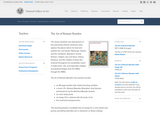
The visual narratives and abstractions of this preeminent African American artist explore the places where he lived and worked: the rural South, Pittsburgh, Harlem, and the Caribbean. Bearden's central themesŃreligion, jazz and blues, history, literature, and the realities of black lifeŃendured throughout his remarkable career in watercolors, oils, and especially collages and photomontages from the 1940s through the 1980s.

Offers a foundation in the visual art practice and its critical analysis for beginning architecture students. Emphasis on long-range artistic development and its analogies to architectural thinking and practice. Learn to communicate ideas and experiences through various two-dimensional, three-dimensional, and time-based media, including sculpture, installation, performance, and video. Lectures, visiting artist presentations, field trips, and readings supplement studio practice. Required of and restricted to Course 4 majors. Lab fee.

The objective of the course is to examine current practices in the apparel industry in the areas listed below, divided into three modules of instruction. The course culminates in a final module during which students will develop their original ideas based on research in these areas:
Module 1: Fair Trade and Ethics Global practices in the industry
Module 2: Sustainability and Sustainable Alternatives Biosynthetic materials being developed in conjunction with efforts to thwart climate change
Module 3: Technology in Fashion Smart textiles that redefine functionality of garments
Module 4: Design, Market and Pitch a product or collection grounded in one of these emerging areas of the fashion industry
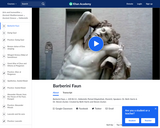
In this art history video discussion Beth Harris and Steven Zucker consider the Barberini Faun, c. 220 B.C.E. (Glyptothek, Munich).
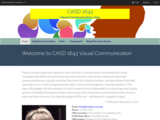
Visual communication pervades our lives. We live in a visual culture, surrounded by visual messages that affect us consciously and unconsciously. Much of our media and electronic communications are visually-oriented. But the truth is that as humans, we have always lived that way, and we are, in fact, programmed to take in the world through our visual perceptions. This class will grapple with the question of what it means to be so dependent on visual input and output and how that affects all aspects of our lives as one of our dominant communicative tools. And you may even learn how you can take advantage of this tool – and lessen it’s negative impact. Historical, physiological, perceptual and cognitive aspects of visual communication. Broad and diverse approaches to visual perception, reception and persuasion including theoretical perspectives, critical analysis methods, and ethical implications.
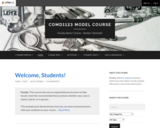
An introductory course designed to explore the basic tools, techniques and principles of drawing. The course also covers projection systems, plans, elevations, sections, oblique, isometric, one point perspective and two point perspective views. Students learn to further render forms and texture through analysis of light and shadow and by utilizing the 5-value system
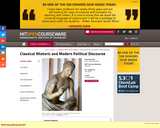
"This course is an introduction to the history, theory, practice, and implications of rhetoric, the art and craft of persuasion throughAnalyzing persuasive texts and speechesCreating persuasive texts and speechesThrough class discussions, presentations, and written Assignments and Labs, you will get to practice your own rhetorical prowess. Through the readings, you'll also learn some ways to make yourself a more efficient reader, as you turn your analytical skills on the texts themselves. This combination of reading, speaking, and writing will help you succeed in:learningto read and think criticallytechniques of rhetorical analysistechniques of argumentto enhance your written and oral discourse with appropriate figures of speechsome techniques of oral presentation and the use of visual aids and visual rhetoric."

Cocaine afflicts many individuals and is potently addictive. Originally hailed as a wonder-drug in the late 19th century, cocaine is now considered an illegal substance. Cocaine’s addictive properties can be attributed to changes in the dopamine reward pathway of the Ventral Tegmental Area and Substantia Nigra, Prefrontal Cortex, Dorsal Striatum, Nucleus Accumbens, Amygdala, Globus Pallidus, and Hippocampus. This drug affects the brain in two processes: binge and crave. The binge process highlights cocaine’s ability to block dopamine reuptake from the synapse resulting in hyperstimulation of the postsynaptic neuron in the dopamine reward pathway. The crave process promotes drug-seeking behavior through conditional and contextual cues. Understanding the effects of cocaine in the brain may grant insight in creating future medication and therapies to treat individuals addicted to this drug.
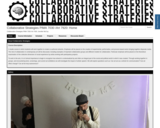
A studio course in which students will work together to create co-authored artworks. Emphasis will be placed on the creation of experimental, performative, and process-based works bringing together disparate media. The role of collaboration in contemporary art will be discussed, including examples of important collaborative groups and different models for collaboration. Particular emphasis will be placed on the theoretical examination of the collective dimension of social experience by artists working with participatory projects.
To work in the arts, it is of utmost importance to begin to recognize how artwork is contextualized by and often an integral part of the social and political world in which it was created. Through working together in groups, and encountering texts, screenings, and current art exhibitions we will investigate the impact of artistic speech. We will explore questions such as: Can art act as a vehicle for communication? Can art effect change? Can art be truly autonomous?
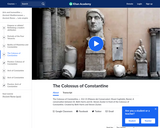
This video features a Smarthistory conversation between Dr. Beth Harris and Dr. Steven Zucker in front of the Colossus of Constantine, c. 312-15 (the first Christian Emperor of Rome). Palazzo dei Conservatori, Musei Capitolini, Rome.

In this interdisciplinary seminar, we explore a variety of visual and written tools for self exploration and self expression. Through discussion, written assignments, and directed exercises, students practice utilizing a variety of media to explore and express who they are.
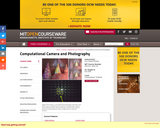
A computational camera attempts to digitally capture the essence of visual information by exploiting the synergistic combination of task-specific optics, illumination, sensors and processing. In this course we will study this emerging multi-disciplinary field at the intersection of signal processing, applied optics, computer graphics and vision, electronics, art, and online sharing through social networks. If novel cameras can be designed to sample light in radically new ways, then rich and useful forms of visual information may be recorded -- beyond those present in traditional photographs. Furthermore, if computational process can be made aware of these novel imaging models, them the scene can be analyzed in higher dimensions and novel aesthetic renderings of the visual information can be synthesized.We will discuss and play with thermal cameras, multi-spectral cameras, high-speed, and 3D range-sensing cameras and camera arrays. We will learn about opportunities in scientific and medical imaging, mobile-phone based photography, camera for HCI and sensors mimicking animal eyes. We will learn about the complete camera pipeline. In several hands-on projects we will build physical imaging prototypes and understand how each stage of the imaging process can be manipulated.
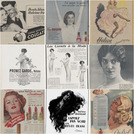
The images advertising women’s beauty and care tell a cleverly designed story intertwining social norms of desire, intimacy, and gender. This how-to piece offers prompts and archival resources to examine these images diachronically and for pedagogical purposes. Discussing this type of images provides a space of interrogation in which students can put under scrutiny which bodies are idealized and which bodies are invisibilized in diverse historical and cultural contexts.
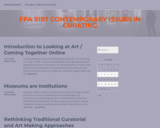
Contemporary Issues in Curating will offer an introduction to curatorial practice, examining the processes of exhibition-making from intersectional, cultural, theoretical, and pragmatic perspectives. Since the Coronavirus has greatly altered the way we produce and consume culture, this class will consider ways in which making, showing and experiencing art beyond the “white cube” might be reimagined. The course will look at historical and contemporary examples of curatorial practices that rethink modes of accessibility and equitable spaces. As more and more cultural programs have moved online, we will question and participate in this realm using the Baruch College Art Collection to organize a digital exhibition that is then collectively designed to operate within this networked, screen-based culture.
This course will prepare you to think through and respond critically to historic and emerging cultures of curating and museum cultures. You will have the opportunity to analyze the field of curating and respond to what makes a “good” curator in the 21st century. You will not only learn to criticize but to understand why museum apparatuses of display and certain art historical cannons exist. Using the Baruch College Art Collection, you will curate an exhibition, articulating and communicating artwork for various public audiences, while understand the basics of digital software to organize an online project for which you can use in your professional portfolio.

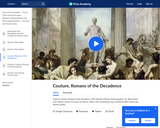
This art history video discussion looks at Thomas Couture's "Romans of the Decadence," 1847, oil on canvas. (Musée d’Orsay, Paris).
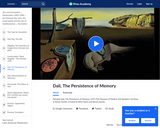
In this art history video discussion Sal Khan and Steven Zucker consider Salvador Dalí's "The Persistence of Memory" 1931, oil on canvas. (The Museum of Modern Art).